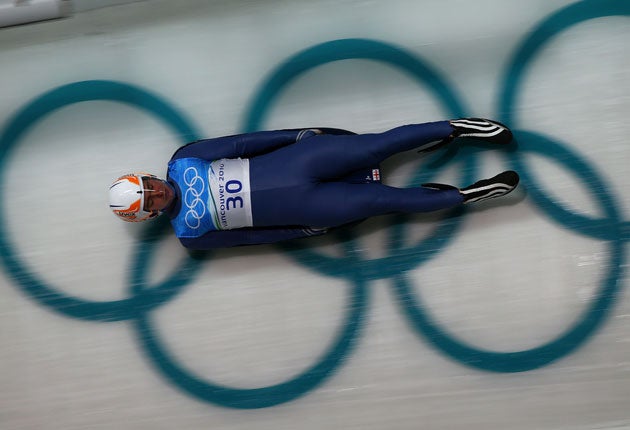Winter Olympics chief knew of luge fears a year before athlete's death
Sport's federation voiced alarm over dangers of high-speed run

Your support helps us to tell the story
From reproductive rights to climate change to Big Tech, The Independent is on the ground when the story is developing. Whether it's investigating the financials of Elon Musk's pro-Trump PAC or producing our latest documentary, 'The A Word', which shines a light on the American women fighting for reproductive rights, we know how important it is to parse out the facts from the messaging.
At such a critical moment in US history, we need reporters on the ground. Your donation allows us to keep sending journalists to speak to both sides of the story.
The Independent is trusted by Americans across the entire political spectrum. And unlike many other quality news outlets, we choose not to lock Americans out of our reporting and analysis with paywalls. We believe quality journalism should be available to everyone, paid for by those who can afford it.
Your support makes all the difference.Organisers of last year's Winter Olympics in Vancouver were warned about potential problems with the luge run – notably record-shattering speeds – almost a full year before an accident that killed a young competitor, newly released emails have revealed.
On his final practice run at the Whistler Sliding Centre, the Georgian luger, Nodar Kumaritashvili, 21, lost control on a curve and was catapulted into the air. He crashed into an unprotected metal pole and died instantly. The fatal accident cast a pall over the opening ceremony of the Games held later the same day.
With the first anniversary of the accident coming this weekend, the new revelations, contained in emails obtained by the Globe and Mail newspaper and the Canadian Broadcasting Corporation under freedom of information laws, are a potential embarrassment to the former chief executive of the Vancouver Olympic organising committee, John Furlong.
The email chain was spurred by a letter sent by the International Luge Federation (ILF) eleven months before the start of the Games to the German designers of the luge run, voicing alarm about how fast it was proving to be. A copy of the letter was seen by Mr Furlong who in turn expressed his concern to others in the organising committee.
"Embedded in this note (cryptic as it may be) is a warning that the track is in their view too fast and someone could get badly hurt," Mr Furlong wrote in one email made public yesterday. "An athlete gets badly injured or worse and I think the case could be made we were warned and did nothing."
He went on: "I'm not sure where the exit sign or way out is on this. Our legal guys should review at least."
Another email apparently written by Tim Gayda, who was vice-president of sport for the organising committee, shows that while he had also read the luge federation's warning he too saw no way of responding to it. "There is nothing to do on our side but it does put in writing concern about the speeds of the track if there was ever an incident," he wrote.
Mr Furlong, who emigrated to Canada from Ireland in the early 1970s, revealed in a memoir published this month that Kumaritashvili's family received Canadian $150,000 (£95,000) in insurance money after the accident and that when he travelled to a memorial service for the athlete in Georgia he handed over an additional C$25,000 in cash.
In the book, Patriot Heart, Mr Furlong says that he never imagined anyone losing their life amid all the worries and challenges ahead of the Games, not least the dearth of snow at one of the ski competition sites. The author also points out that the crash was always treated as an accident and nothing more by the British Columbia authorities. "The chief coroner of B.C. has handed down his report and found no blame," he writes.
The warning letter from the ILF was written by its president, Josef Fendt. It noted that some riders on the Whistler run had clocked speeds of 155kph (96.3mph), when 135kph had previously been considered normal for Olympic courses.
"Most of the athletes were able to cope with these extremely high speeds," he wrote, according to portions of the letter posted yesterday by the Globe and Mail. "Nevertheless, overstepping this limit would be an absolute unreasonable demand for the athletes . . .This causes me great worry."
The organising committee always said that the luge run was the responsibility of the ILF. The federation's general secretary, Svein Romstad, told the Globe and Mail that the high speeds would have instantly caused concern. "The red flags would have gone up, absolutely," he said. "Our goal is always to have tracks around 135kmh, and that was what the designer projected. Instead, we suddenly got to 154 kmh. That was never our intention. This has been devastating for us, as a federation. It's not what we're about."
Mr Romstad noted that the ILF was already working to make sure that at Sochi, Russia, the host city of the next Games, the luge run will mark a return to more normal speeds. "If we believe we can make changes that can make a difference, we're going to make them."
Join our commenting forum
Join thought-provoking conversations, follow other Independent readers and see their replies
Comments